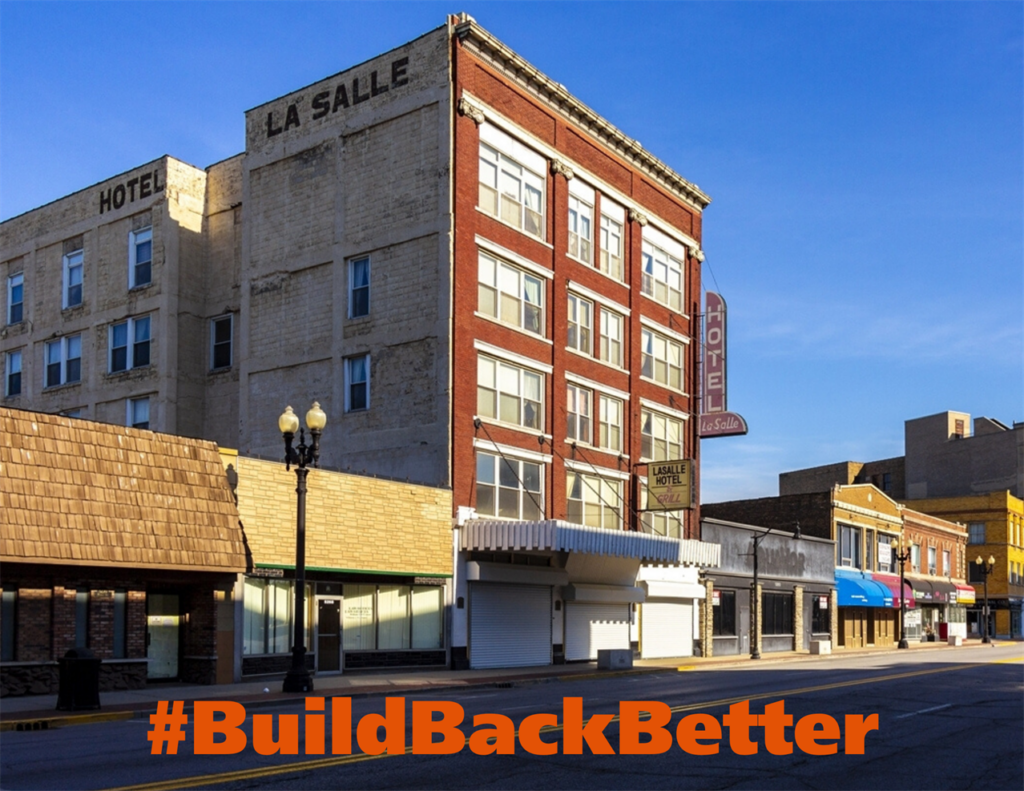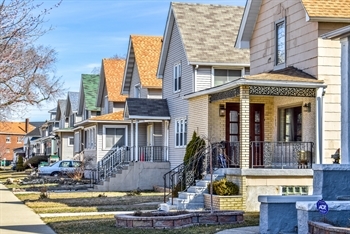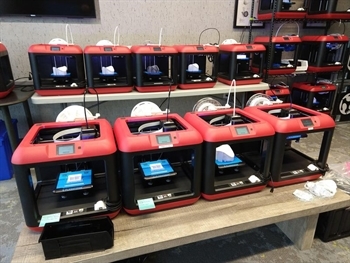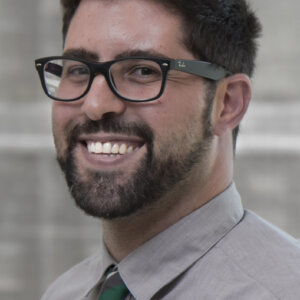COVID-19 Dispatches From Northwest Indiana: All Hands on Deck
Though COVID-19 presents many challenges to Northwest Indiana, the elements essential for understanding and implementing an equitable recovery are found throughout the region, in all types of communities and neighborhoods.

The Chicago region is a 100 mile “U” hugging Lake Michigan from Kenosha, WI to St. Joseph, MI, spanning Southeastern Wisconsin, Northeastern Illinois, Northwest Indiana, and Southwestern Michigan. This includes nearly 800,000 Indianans living in 41 communities with tens of thousands of daily border crossings for work, life, and leisure.

Despite this connectivity, Northwest Indiana can sometimes be overlooked by Illinoisans and other Indianans. This is unfortunate as it affords no shortage of opportunities and continues to supply talent, creativity, recreation, and beauty. The Metropolitan Planning Council (MPC) believes an economically healthy and integrated Chicagoland must include Lake, Porter, and La Porte County communities – and has decades of experience working across the state line with governmental and grassroots partners to advance shared priorities like natural space conservation and protection, mass transit, creative placemaking, and adaptive reuse.
Because much reporting on COVID thus far has focused on urban Chicagoans, a deeper look is needed at the impact of Coronavirus in the broader region (including Northwest Indiana). The elements essential for understanding and implementing an equitable recovery are found throughout the region, in all types of communities and neighborhoods. That’s why we at MPC interviewed a variety of organizations (including the City of Hammond, Northwestern Indiana Regional Planning Commission, NW Indiana Managers and Planners, One Regional NW Indiana, and the Field Museum) in May 2020 to learn from their experiences and highlight their successes.
A Decade of Positive Momentum
Judging from my conversations, there is palpable optimism for the future. In recent years, the State of Indiana has recognized the economic opportunity afforded by proximity to Chicago as an increasingly diverse array of jobs cross the border (but stay in the region). Both sides of the border now recognize the need for, and urgency of, double tracking the South Shore Line to dramatically improve speeds and train frequencies. A planned Lake Corridor Connector will bring commuter rail to Hammond, Munster, and Dyer. Transit-Oriented Development (TOD) projects and master-planning visions are injecting new life into downtowns like Hammond, which is pursuing an ambitious multi-phase housing and retail redevelopment, and Michigan City, which is home to a train-proximate arts incubator, Artspace Uptown Artists Lofts. Gary is emerging as a hub for creatives as Paint Gary transforms spaces through art. To a greater extent than ever before, municipalities work beyond their borders, jointly problem solving and sharing expertise and resources. Monthly meetings between town planners and city managers cross geographic and political divides and encourage cooperation.

The pace is quickening for land conservation and remediation through the efforts of the Calumet Land Conservation Project, of which MPC is a member. Efforts like the Marquette Greenway, a continuous trail connecting Chicago to New Buffalo, MI, and the National Park designation of Indiana Dunes has brought increasing visitors (park attendance doubled last year). Duneland communities continue to emerge as a closer, more affordable option for vacation- or second homes. Hyper-local efforts are reinforcing and deepening community assets such as local parks, hosting new cultural and artistic programming. The region’s place in civil rights, labor and environmental history is increasingly recognized.
Community Responses to COVID-19
Like everywhere else, COVID-19 is affecting every facet of life in Northwest Indiana. Lake County has been particularly hard hit with nearly 4,000 cases and 215 deaths (as of 6/8/2020). Schools are closed. Businesses are shuttered or must create new ways to serve customers. Municipalities are cancelling popular community events including high-earning summer festivals. Residents are grappling with concerns over health, lost income, and mobility (ex: changes to mass transit). Existing inequalities are being exacerbated with communities of color bearing the brunt of economic pain and illness. Already housing- and food-insecure households are even more vulnerable than three months ago. A yawning digital divide means that many cannot telecommute or continue their studies. There is no “business as usual” with COVID-19. Even still, Northwest Indiana is finding creative ways to adapt.
Municipalities across the region are staggering utility or infrastructure employees with shifts. They are experimenting with midnight trash collection, smaller road crews, and telecommuting for non-essential staff. They’re figuring out online or contact free bill pay platforms, and re-designing municipal offices with floor markers, Plexiglass dividers, and capacity limits. One municipality (Chesterton) even provided its vulnerable citizens with window thumbs up / thumbs down cards to trigger wellness checks. Even while services continue, municipalities must compensate for lost sales tax revenue, business and residential foreclosure, lost gas tax (for road repairs), and cancelled developments. Regional transit has been hard hit, and ridership numbers won’t soon return to 2019 levels.

Grassroots organizations and community institutions are stepping up in major ways as well. As an example, the Field Museum is running their 3D printer around the clock to donate facemasks to Gary’s municipal employees. The need is vast, but the hundreds of masks (eventually) printed will help keep essential workers safe. Brunswick Park on Gary’s West Side continues to transform from an underutilized public space to a community asset with virtual gatherings, multi-generational storytelling, and food distribution in partnership with the Bread of Life Church. Neighbors are stepping up by dropping off groceries for the homebound, and countless other individual acts of kindness maintain the bonds of community.
Community Recovery
Northwest Indiana has a long road to recovery, but the progress made since the Great Recession shows what’s possible with creativity and determination. The region can and should be a nationally known and celebrated story of cultural and ecological resilience. Already there are signs of life returning as businesses cautiously re-open and communal spaces once again become community hubs. Organizations like One Region Northwest Indiana are continuing to pair public and private investments, reiterating the popularity of and demand for transit oriented development and creative place-making. NIRPC remains focused on driving the economy and environment forward. Municipalities will continue to jointly collaborate whether through Zoom meetings (or eventually in real-life) to share challenges and solutions. As more view the region as a destination and not a pass through, more will see Northwest Indiana as a dynamic and diverse collection of cities and towns.
For positive momentum to continue, resources must be focused on community and economic justice, seeking to repair decades of structural societal and economic inequality.
Now is the time to use what has been learned about community resiliency and creativity to leverage existing assets. In the absence of a central anchor institution, a diverse array of stakeholders must pool resources and simultaneously encourage entrepreneurism for new businesses to grow and flourish. As private citizens, we can do our part by staying informed, by patronizing local businesses, and supporting charitable causes such as the Northwest Indiana Food Council. In so doing, there is tremendous opportunity to unleash the potential of Northwest Indiana and continue its transformation.
MPC continues to work on both sides of the border, helping the Chicagoland region recover and change for the better. We’re working on responses to aid the infrastructure critical to supporting individual and community health: housing, transportation, land use, water, and government operations. For more of MPC’s recommendations and writing related to the pandemic, please visit https://metroplanning.org/BuildBackBetter.
